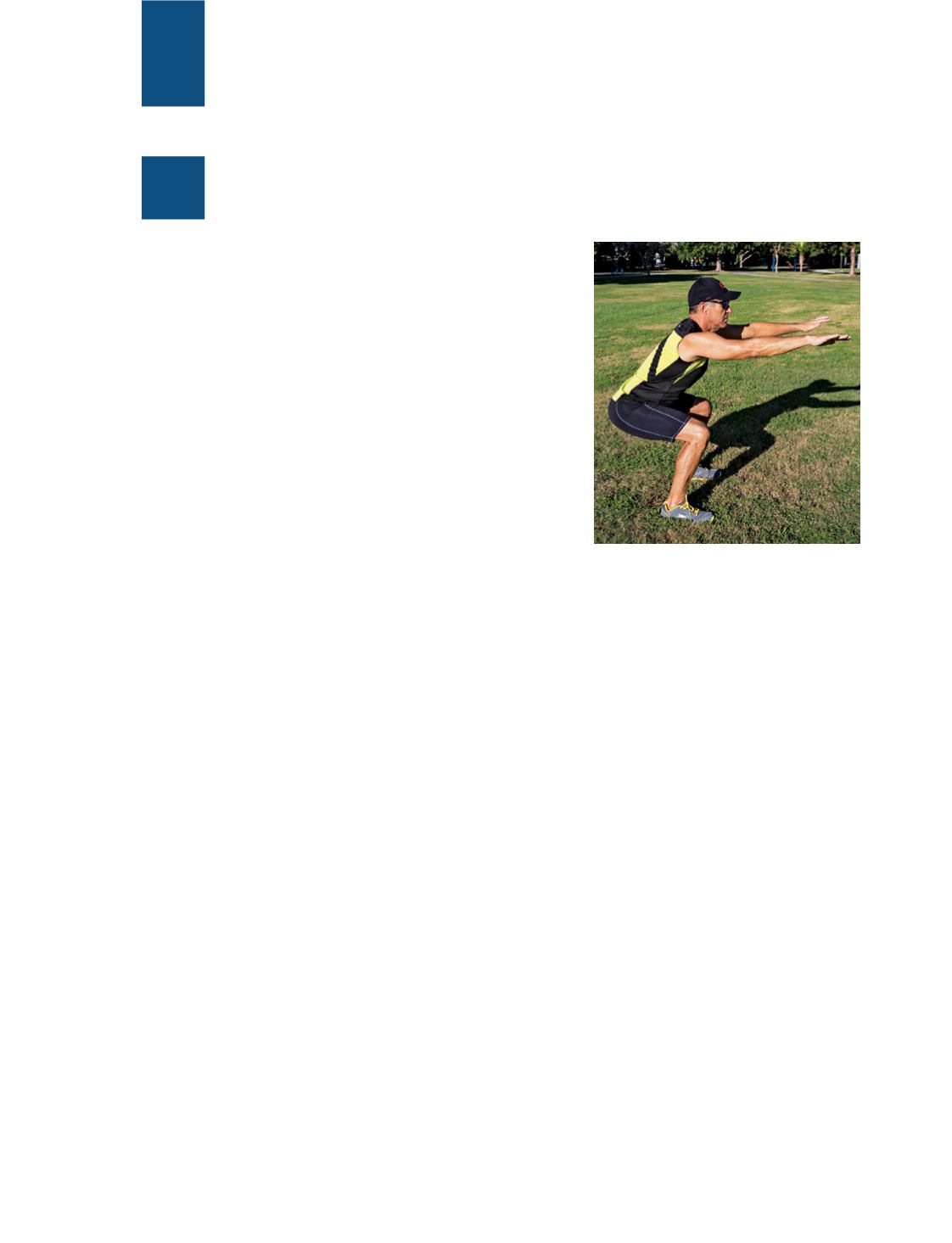
A
variety of natural-movement exercises have
recently entered mainstream fitness. In the fitness
industry the exact definition of natural movement
ranges from activities and movements that occur
between the body and the natural world to multijoint exercises
that can be accomplished using traditional weights.
Most natural-movement professionals agree on a
scientifically sound premise: The exercises require that several
large muscle groups work together to perform a task through
a full range of motion. Most exercises are completed at various
levels in three-dimensional space (in contrast to the single-
plane movements of traditional weight machines). Large
muscle groups working together performing movements in
multiple planes is inherently life-specific training. This sort of
training prepares your body for the activities of daily living —
in addition to the joys of the dynamic underwater world.
Many of these movements may feel anything but natural at
first. The exercises are natural only in the sense that your body
once had — perhaps many years ago — the aptitude to develop
these skills. The unfortunate truth is that in modern society few
of us have the opportunity to physically reach our full potential
unless we take the initiative to prioritize our fitness.
Train smarter, not harder. The images shown in this article
illustrate a substantial range of motion for each exercise. Do
not try or expect to reach this range during the first day, week
or even month of doing the exercise. Full range of motion is
a long-term goal. The key is to be patient, pay attention to
your body and gradually increase mobility. Your muscles work
together to develop strength through an increasing range of
motion, which amounts to improved flexibility. It is not smart
to “push through the pain”; gradual progression is a fitness
principle that yields long-term results with minimal risk. If at
any point you feel pain, take a break, reassess and adjust your
form, or move on to a different exercise.
Attempt to complete the stated number of repetitions for
three or four rounds, depending on your training state and
the amount of time you have available. Remember, every
repetition counts, so if you have time only for a single round,
that’s better than nothing. Initially you may need breaks
between rounds, but as your training progresses, you will
complete the exercises through a greater range of motion at
a faster (yet still
controlled) pace
with less rest in
between.
The exercises
purposely
alternate
between low
and high levels
to make you get
up and down
between exercises. You may feel slightly light headed when
you transition from low to high, so transition slowly until
you feel comfortable. Focus on how you feel, and always
listen to your body.
Deep Air Squats
(20 repetitions)
These are traditional body-weight squats. A full-range deep
squat is shown, but your full-range squat may be just a
quarter of that range of motion. Descend as low as you feel
comfortable. If you pay attention to your body, each time you
do the routine your comfortable range of motion will slowly but
surely increase.
1. Start in an athletic stance with your feet shoulder-width
apart (or slightly wider) and your toes pointing slightly
outward.
2. Flex (bend) your knees and hips simultaneously while
consciously pushing your rear end back and down.
3. Keep your eyes toward the horizon, and push through your
heels to minimize stress on your knees while maintaining
the natural curve of your spine.
4. Fully extend your hips through their full range of motion
in a controlled manner at the end of each repetition.
Tips:
• Squats should not put pressure on your knees. If you feel any
stress on your knees, you probably need to lift your chest higher.
• Squats should not put pressure on your lower back. If
you feel any stress on your lower back, you are probably
focusing your eyes too high in the sky.
• Adjust until each repetition feels right.
The
DAN
Guide to Healthier Diving
Natural Movement
32
|
fall 2013
DIVE FITNESS
T E X T B y J e s s i c a B . A d a m s , P h . D .
P H O T O S B Y S T E P H E N F R I N K


